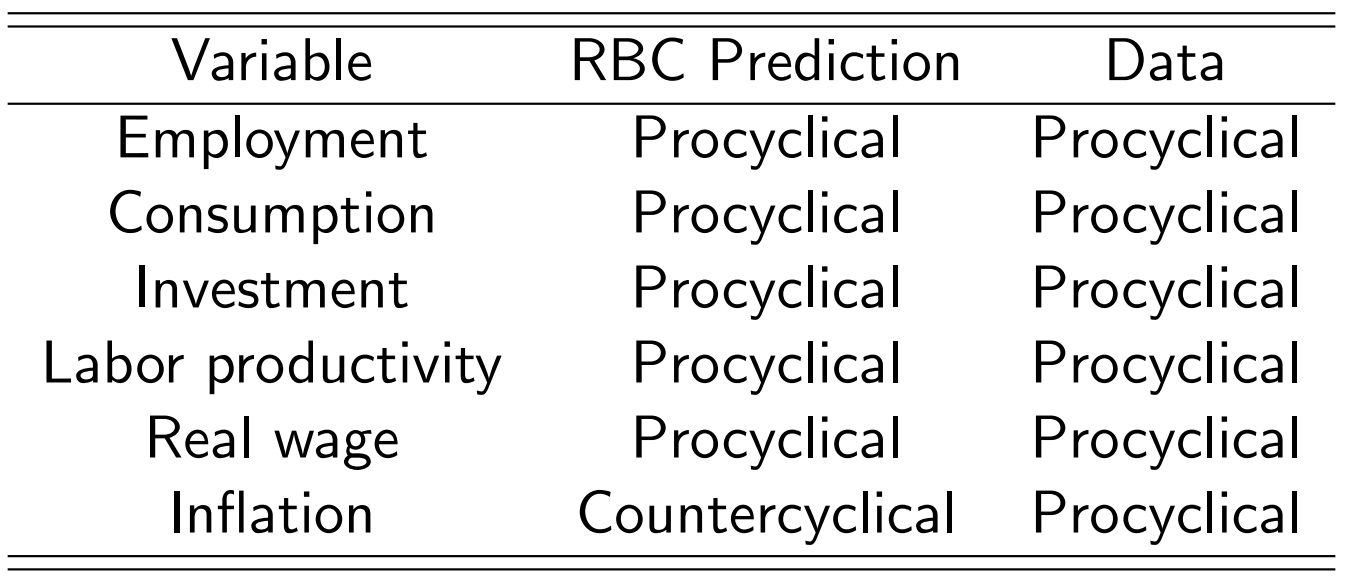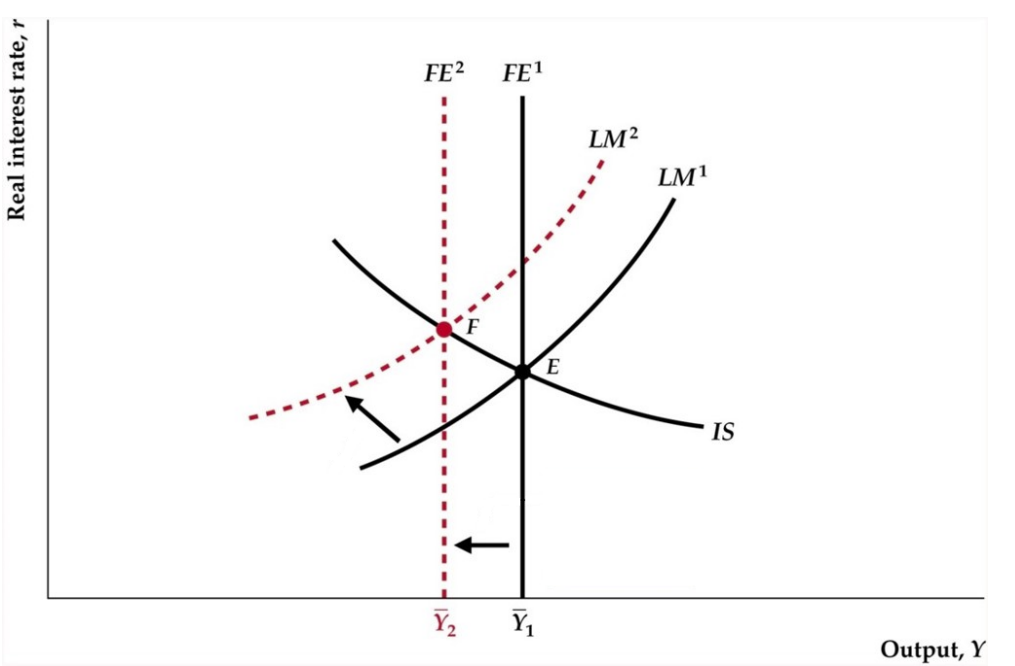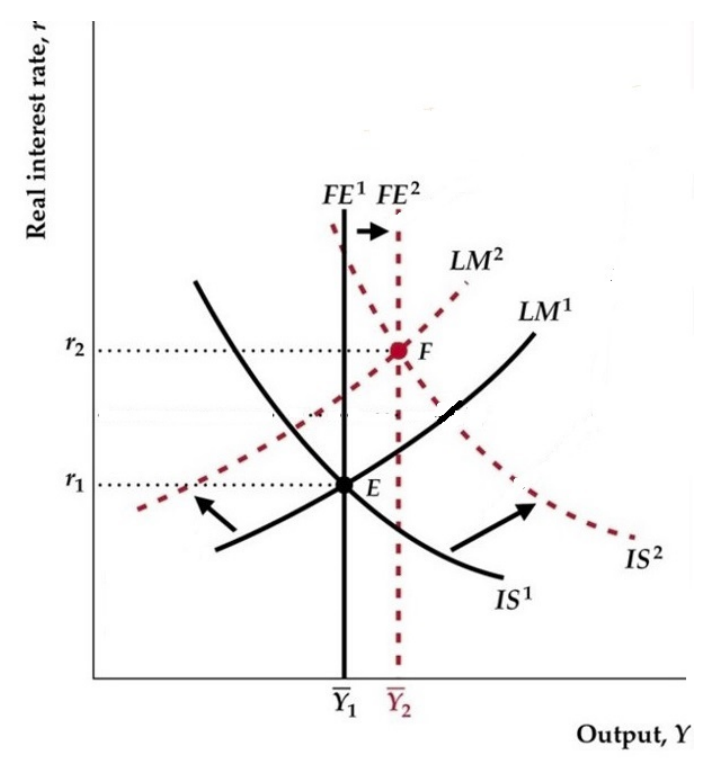Basic Model
Key assumptions:
- Productivity shocks () are primary cause of business cycles
- Prices and wages adjust rapidly
- economy always in or near General Eq

Negative Productivity Shock (A↓)
Real consumption: ↓ as Y ↓
Real investment: ↓ as ↑
Real wage: ↓ as MPN ↓
Inflation: ↑ as ↑
Graph

Solow Residual: the part of output that cannot be directly explained by measured capital and labor inputs
- strongly procyclical
Critiques of RBC
Source of Productivity Shocks
Measurement - Solow Residual
Output not directly explained by or is attributed to empirically it is strongly procyclical, however this does not necessarily mean that A is solely responsible.
- Solow residual captures changes in utilization as well as
- Solow residual predicted by factors such as
Cyclicality of Unemployment
Unemployment rises in recessions because productivity shocks cause increased mismatches between workers and jobs
- this idea is not supported by the evidence
Gov Responses in RBC
Fiscal Policy
Assume Ricardian Equivalence:
Government Spending Increase (G↑)
IS curve shifts right
FE curve shifts right:
LM curve shifts left:
Real consumption: ↓ as Y ↓
Real investment: ↓ as ↑
Real wage: ↓ as
Labor Productivity: as
Graph

Benefits of Fiscal Policy: Y
Costs of Fiscal Policy:
- workers may be worse off but
- may be lags in implementing fiscal policy
RBC: gov should only when benefits exceed costs
Monetary Policy
Neutrality of money: no real effects
- this does not align with empiricism
Misperception Theory
motivated by empirical facts not matching up with model in terms of monetary policy
- Producers form expectations about the general price level
- Producers have imperfect information
- When expectations actual price changes, they perceive the change in general price level as a change in the relative price of their products (misperception)
New SRAS curve
where is the expected price level and is positive constant that describes how strongly output reacts to deviation in
In the short run changes but does not In the long run changes

Factors that shift SRAS
- changes in or
SRAS shifts right SRAS shifts left